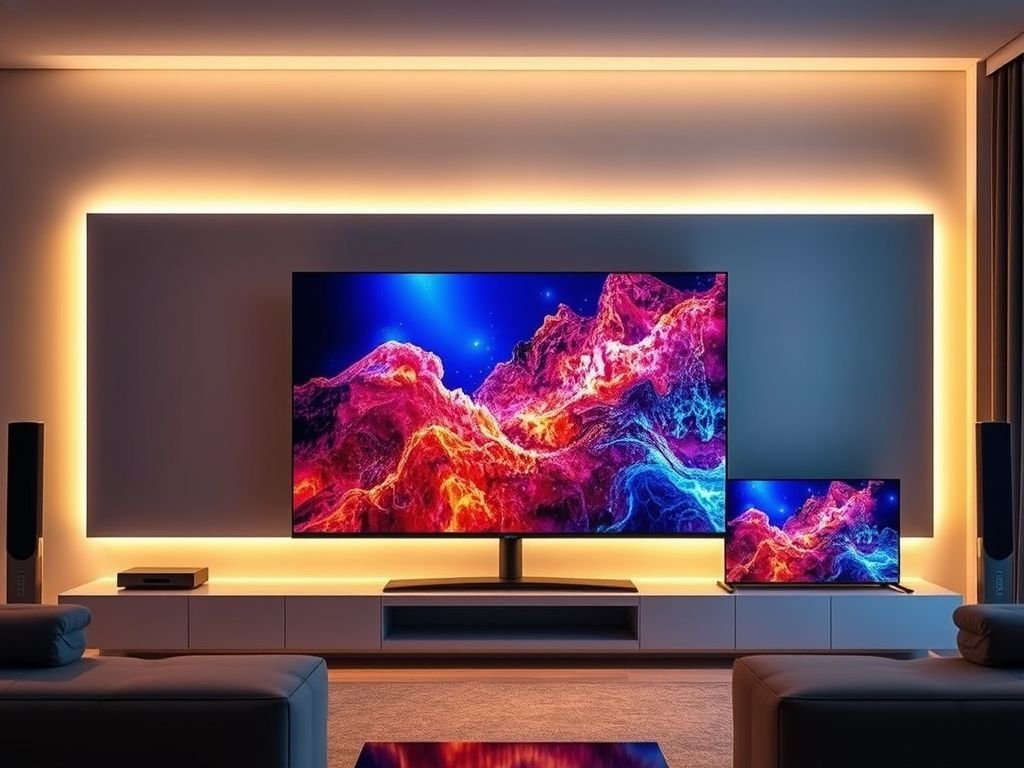Which Type of TV Should I Buy? Your 2025 Guide to OLED, LCD, and More

Which Type of TV Should I Buy? Your 2025 Guide to OLED, LCD, and More
When it comes to choosing a new TV, the options can feel overwhelming. But in reality, there are only two main types of TV panels on the market today: OLED and LCD (often marketed as LED). Understanding the differences between them is the first step to finding the perfect fit for your home, budget, and viewing habits.
OLED TVs: The Gold Standard for Picture Quality
OLED technology continues to lead in picture excellence — and for good reason. Each pixel in an OLED screen produces its own light and can turn completely off, delivering true blacks, incredible contrast, and rich, lifelike colors.
✅ Pros of OLED:
- Deeper blacks and infinite contrast – Perfect for dark rooms and cinematic content
- Accurate, vibrant colors – Ideal for movies and high-end streaming
- Wide viewing angles – No color or contrast loss, even when watching from the side
- Fast response times – Great for gaming, with minimal motion blur
❌ Cons of OLED:
- Higher price tag – Generally more expensive than LCDs
- Fewer size and brand options – Limited to premium manufacturers like LG, Sony, and Samsung
- Potential for glare – Can reflect light in bright rooms
- Risk of burn-in – Static images (like news tickers or logos) left on screen for too long may leave a ghost image
Despite the cost, OLED TVs consistently top expert ratings thanks to their stunning image quality and immersive viewing experience.
LCD/LED TVs: Affordable, Bright, and Versatile
LCD TVs (often called LED TVs due to their LED backlighting) are the most common type on the market. While they don’t match OLED in contrast, modern advancements have significantly closed the gap.
✅ Pros of LCD/LED:
- Wider range of prices and sizes – From budget-friendly models to massive 85-inch screens
- Higher peak brightness – Better performance in well-lit or sunny rooms
- Anti-reflective screens available – Reduces glare in bright environments
- High refresh rates – Many support 120Hz or more, making them excellent for gaming
❌ Cons of LCD/LED:
- Blacks appear gray – Due to backlight bleed, especially in dark scenes
- Lower contrast – Images may lack depth compared to OLED
- Motion blur in fast scenes – Lower-end models may struggle with action or sports
- Narrower viewing angles – Picture quality drops when viewed from the side (though newer models are improving)
Thanks to technologies like Mini LED and full-array local dimming, high-end LCDs now offer much better black levels and contrast — making them a strong contender, especially if you want a big screen without the premium price.
Which One Should You Choose?
Here’s a quick guide to help you decide:
- Choose OLED if:
You want the best picture quality, watch mostly in dim or dark rooms, and value deep blacks and cinematic colors. Ideal for movie lovers and home theater enthusiasts. - Choose LCD/LED if:
You’re on a budget, have a bright living room, want a larger screen, or need more flexibility in brands and pricing. Great for families, sports fans, and casual viewers.
What About 4K, 8K, and HDR?
- 4K (Ultra HD) is now standard on almost all mid-to-large TVs. With over 8 million pixels, it delivers sharp, detailed images — especially on screens 55 inches and up.
- 8K TVs exist, but there’s very little native 8K content. Unless you’re future-proofing with deep pockets, 4K is more than enough for now.
- HDR (High Dynamic Range) enhances brightness, contrast, and color. Look for support for HDR10, Dolby Vision, or HDR10+ for the best results. Not all HDR is equal — higher-end TVs deliver it more effectively.
How Big Should Your TV Be?
There’s no one-size-fits-all rule, but a good starting point is:
- Sit about 1.5 to 2.5 feet away for every 10 inches of screen size.
For example:- 55-inch TV → sit 5.5 to 9 feet away
- 65-inch TV → sit 6.5 to 11 feet away
A 30–40 degree field of view is recommended for a theater-like experience. And thanks to 4K’s dense pixel count, you can sit closer without seeing individual pixels.
When’s the Best Time to Buy?
Timing can save you hundreds:
- Black Friday – Deepest discounts of the year
- Pre-Super Bowl sales – Second-best deals, usually two weeks before the game
- Spring – Clearance on older models as new ones arrive
A TV that launches at $1,100 could drop to $650 within a year — so patience pays off.
Final Tips Before You Buy
- Check the smart TV platform – Google TV, Roku, Fire TV, webOS, and Tizen all offer different experiences. Pick one that feels intuitive to you.
- Look for VRR and ALLM if you’re a gamer — they reduce lag and screen tearing.
- Consider ATSC 3.0 if you use an antenna — it offers better over-the-air picture and sound (NextGen TV).
- Wall-mounting saves space; a stand makes connecting devices easier.
The Bottom Line
You don’t need to buy the most expensive TV to get great quality. But if you want the best picture, OLED is still the king. If you want value, brightness, and size, a high-end LCD with Mini LED is a smart alternative.
Know your room, your budget, and how you watch — and you’ll find the perfect TV without the confusion.





